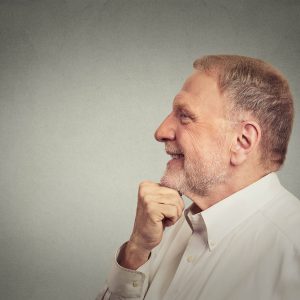The three most important areas that contribute to our ability to balance are our eyes, our ears and our body receptors which are also known as proprioceptors. When we think about our ears and their primary role being hearing we can easily become confused about how they can influence our balance, and if a change in hearing will affect our balance. While the ear has many components that are dedicated to our ability to process sound, there are some specific structures in the inner ear that provide important information to keep us balanced.
The first important structures are called the semi-circular canals. These are three interconnected canals that are oriented in different directions. They are responsible for helping us to detect changes in head position. One of the canals determines when our head is moving forward and backward, one when we rotate or look over our shoulder, and the final canal helps us to determine when we tilt our head to the side. The canals do this through the movement of fluid which is located inside the canals.
Imagine a water bottle on its side sitting on a table. When the bottle is moved across the table, the initial acceleration causes the water to shift position towards the back of the bottle. If movement of the bottle is maintained, the water then stays relatively centered if the movement is smooth enough. When the bottle is stopped, the water again shifts position towards the front of the bottle until it settles. Our canals detect the same changes in fluid, primarily at the start and end of movement as the fluid moves from a centered position to either side of the canal. This system is very effective but only when the head is moving.
The other balance structures are what are known as the utricle and saccule which are located in the vestibule. These structures are important in determining our position relative to gravity, as well as detecting acceleration and deceleration. Within each of these structures are crystal deposits of calcium carbonate (called otoliths) that sit on a bed of gel containing hair cells. The otoliths and gel help to enhance our sense of gravity by adding extra weight to the hair cells. The information received by the saccule and utricle is combined with the information from our eyes and neck to determine if our whole body is moving or if it is simply our head that is moving.
As the organs of balance are separate from the organs of hearing, if our hearing deteriorates with age this has no impact on our ability to balance. However due to their location in the inner ear, any infection or any conditions affecting the inner ear (such as Meniere’s disease) can mean that our organs of balance and also our cochlear (and hence our hearing) will be affected.

